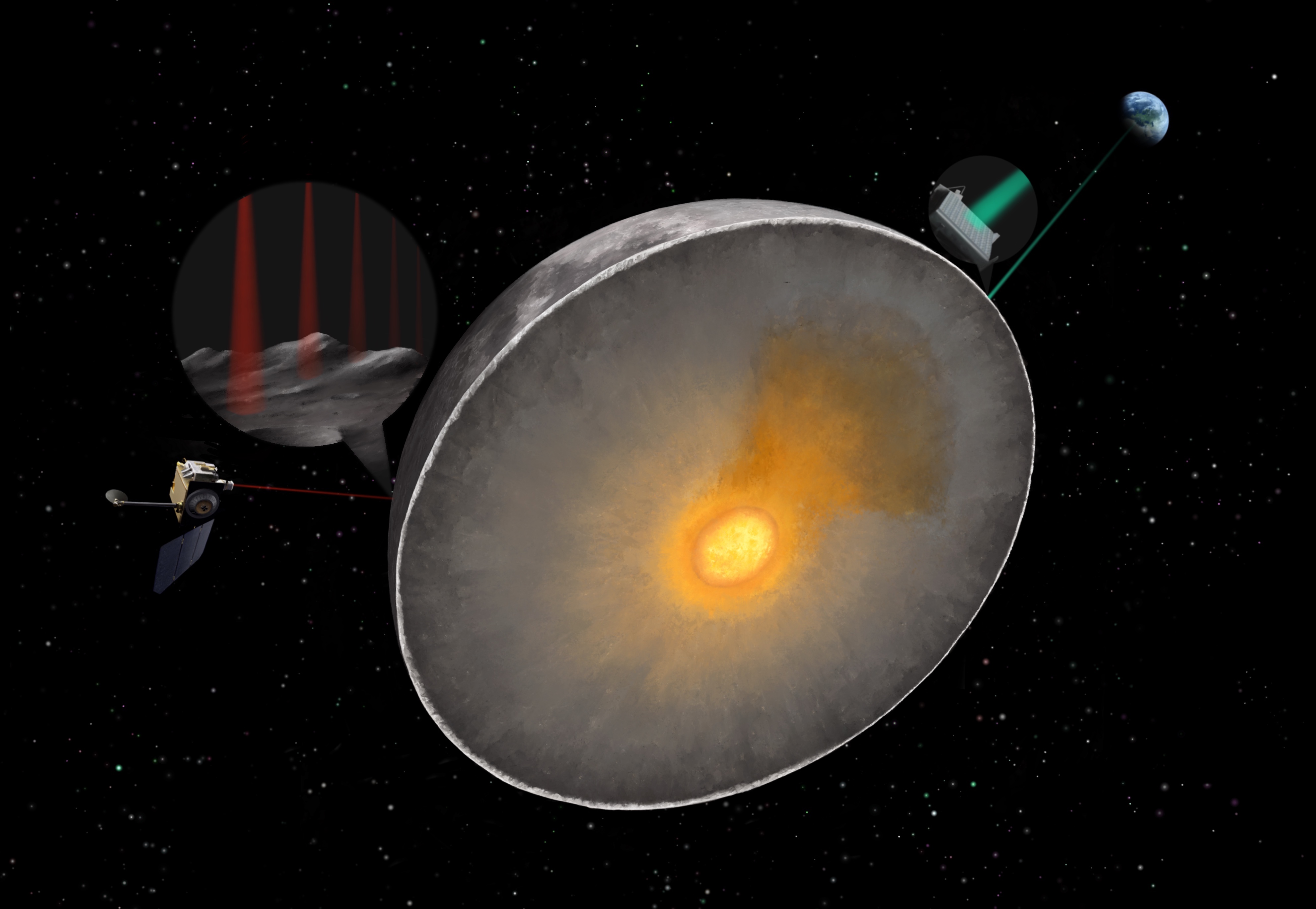Knowledge about the deep interior of the Moon puts tight constraints on its formation and ultimately on the evolution of the Earth-Moon system . Measurements of the tidal response of the Moon resulting from the gravitational field of the Earth provide unique evidence on its inner working and can be obtained from orbiting spacecraft as well as Earth-based observations.
Furthermore, the Moon dynamical monitoring is the most accurate ever made in the Solar System thanks to the deployment of Laser Retro-Reflectors (LRR) on its nearside surface leading to a centimeter accuracy over the past 40 years. Such accuracy requires a high accurate modeling of its orbit but also of its rotation, inducing an unique development in the inner structure for an object different from the Earth.
This project aims at a synthesis of a large amount of observations and modelings obtained from Earth-based Lunar Laser Ranging (LLR) and orbit-based Laser Altimetry (LA) to achieve an improved and consistent determination of the tidal deformation of the Moon by estimating its tidal Love numbers and consequently constraining the present dissipation in the Earth-Moon system.

Moon internal structure constrained by Lunar laser Ranging from the ground (in green) and spacecraft (here LRO) altimetry
Partners:
- Germany: DLR / TUB
- France: Geoazur / IMCCE
Coordinator: A. Fienga (France) / H. Hoffmann(Germany)
Dates: 2020 - 2023
Fundings: ANR PRCI (Programme bilatéral ANR/DFG)
Scientific Life: Weekly on-line meetings have been organised since the beginning of the project in May 2020. The first meeting in person was organised in August 2022 at DLR (Berlin).
LDLR 1st Meeting at DLR (Berlin) 29-30 August 2022: This meeting was the first in person after two years of project, due to the Covid. It was the opportunity for the group to review the results obtained by the project and to interact with guests (first day) and to plan for future actions (second day, limited to the group members). Presentations are accessible here .
Open-access: A repository of the data and publications produced by the consortium are available here




